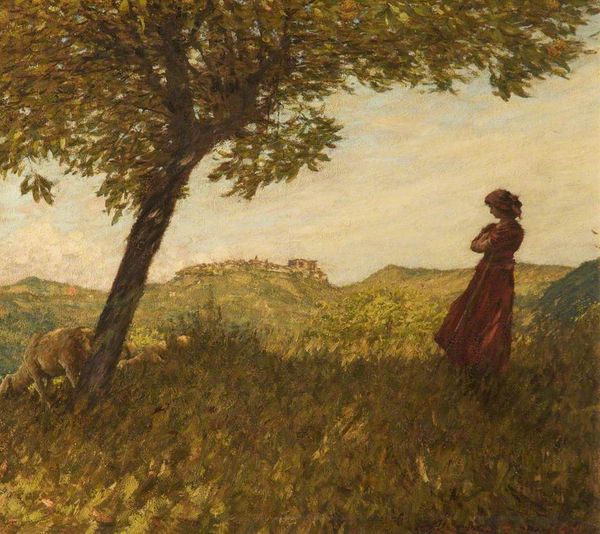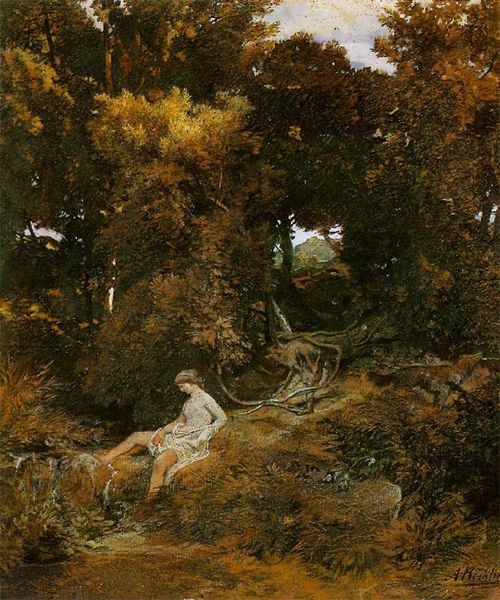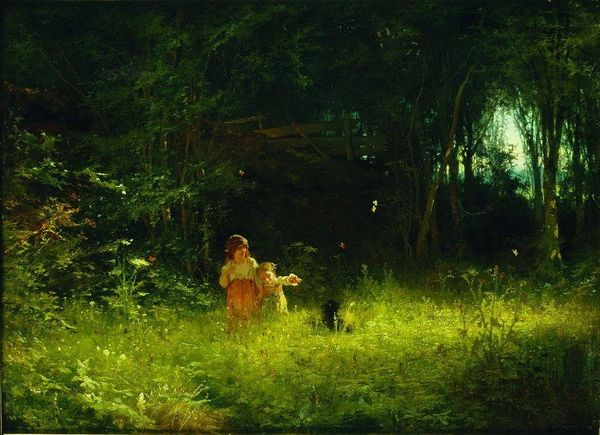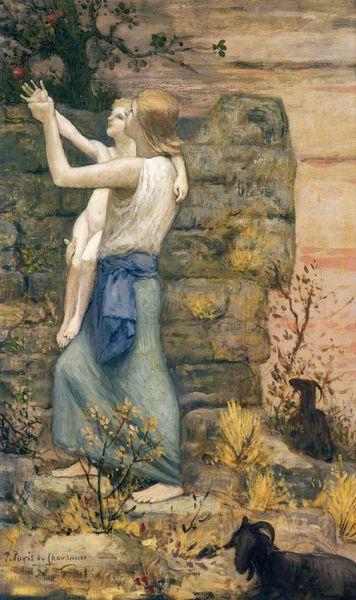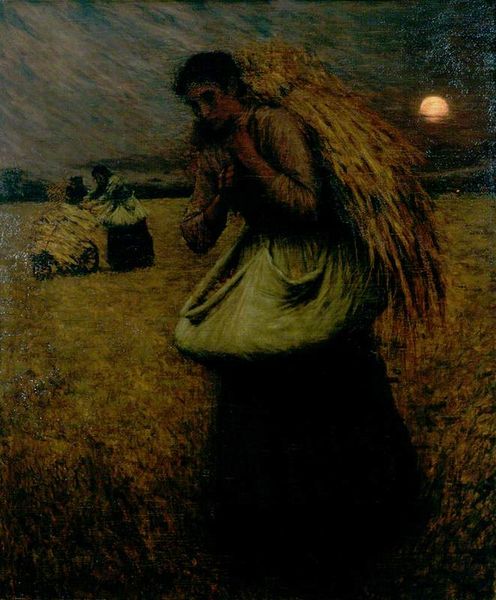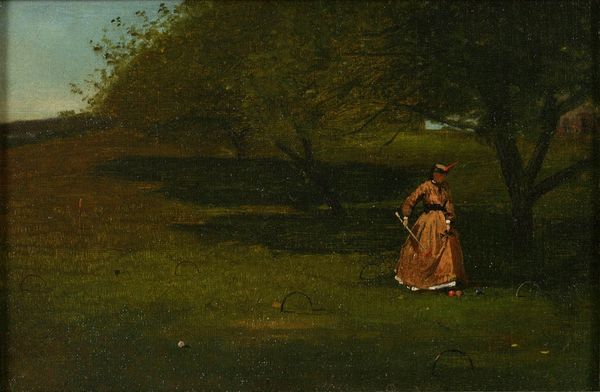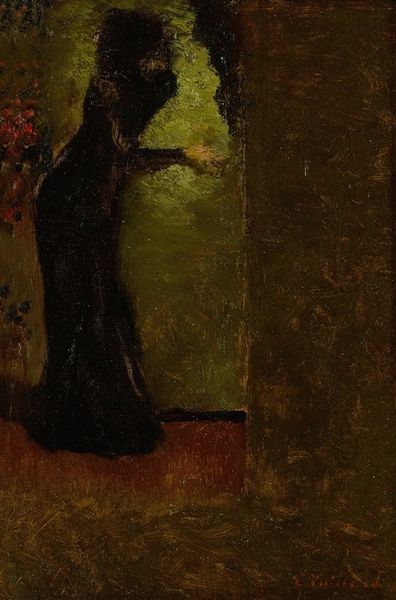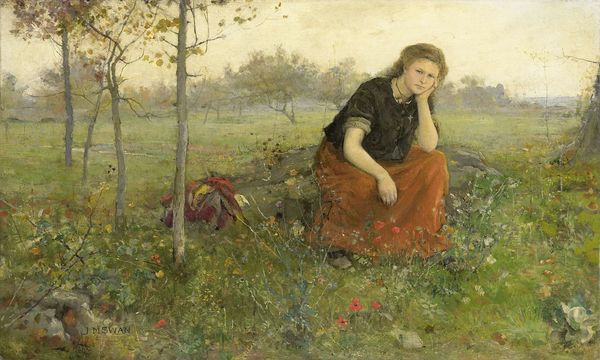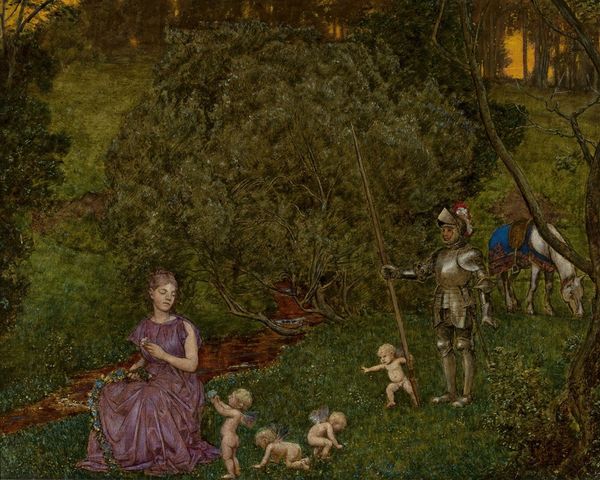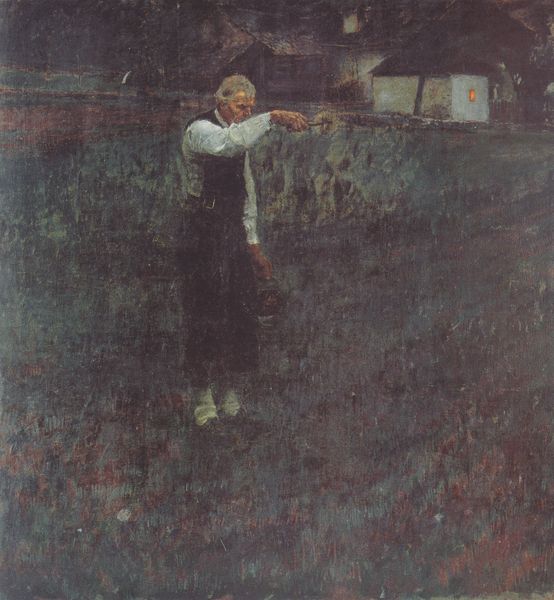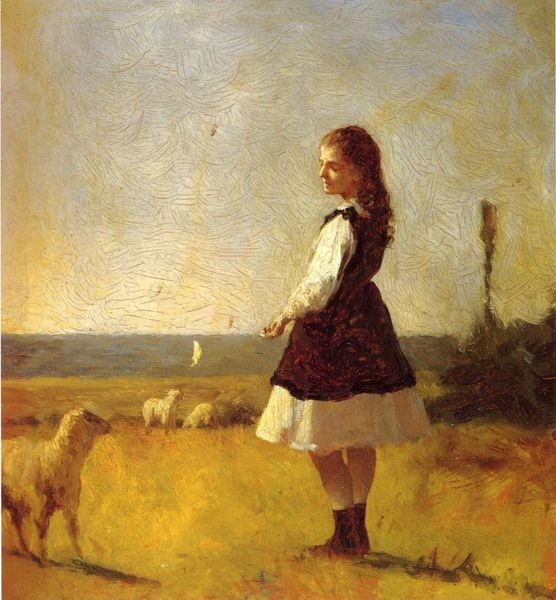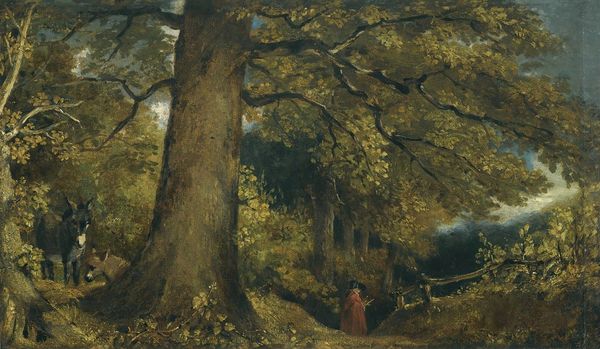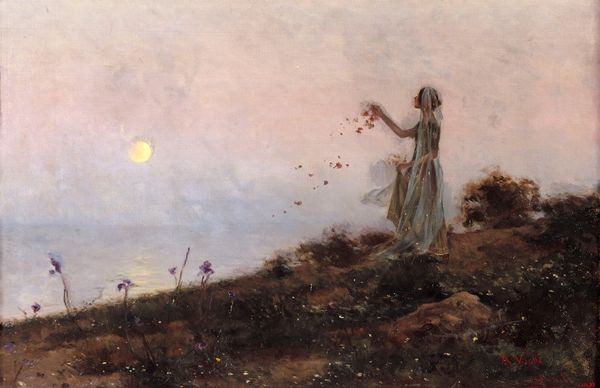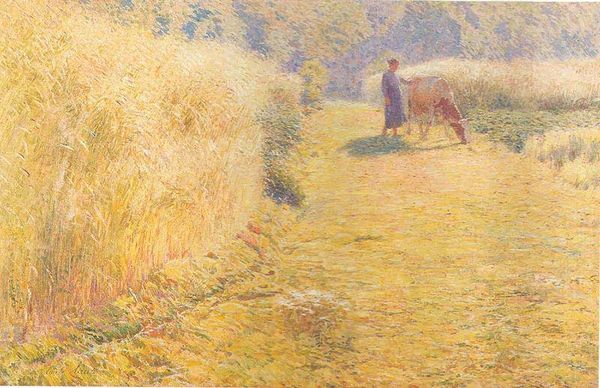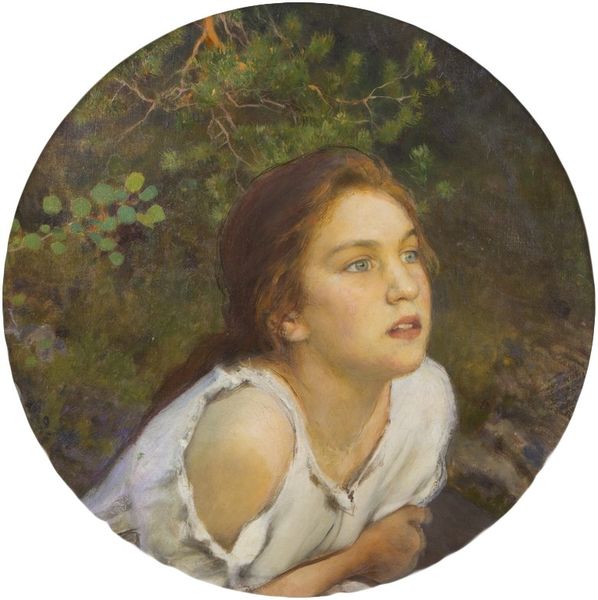
Dimensions: 100 x 100 cm
Copyright: Public domain
Curator: Here we have Pellizza da Volpedo's “Loving Walk,” painted in 1901. It's rendered in oil paint, almost in the round—look at the canvas! Editor: My first thought is, how intimate. There's something incredibly warm and idyllic about the soft light and those figures bathed in its glow. It feels less like observation and more like eavesdropping on a moment. Curator: Absolutely. Volpedo had such a unique vision. He blends genre painting, symbolism, and even hints of romanticism. And don’t forget the location. I think this location really frames their movement within a landscape shaped by class and labor in the countryside of Northern Italy at the beginning of the twentieth century. Editor: That context shifts everything, doesn't it? Knowing the sociopolitical environment casts a shadow, a nuance to what otherwise reads as purely sentimental. Their very act of leisure becomes a statement. A sort of resistance, but also participation in that socioeconomic sphere, a way of life... It makes me wonder, who were they? How were they entangled? Curator: Perhaps, the artist is reminding us that even fleeting moments of joy exist within complex webs of power. He uses light in this way too. See how he casts a soft light on everything; it’s dreamy. I find his manipulation of color to evoke emotions— nostalgia for what the world had before the shift to industrialization-- utterly mesmerizing. Editor: Yes! It highlights the selective nostalgia inherent in art. It prompts us to question, “Whose story is being told?” The style is incredibly painterly. And that circular format, that choice to see our lovers encircled by earth itself— is wonderful, that really closes off any reading of pure and harmless pastoral innocence. Curator: It feels eternal and inescapable, like a recurring dream. Almost suffocating but with good intentions… but what do you do in that dream. Editor: Yes. It also speaks to art's enduring capacity to spark crucial dialogues between ourselves, our histories, and the world around us. Thanks! Curator: It was my pleasure.
Comments
No comments
Be the first to comment and join the conversation on the ultimate creative platform.
